How to Identify Eating Disorders: A Prevention Guide for Parents
Eating disorders are serious and often undiagnosed conditions that can negatively impact your child’s physical and mental health. Many people who struggle with eating disorders begin to develop them at a young age, particularly during adolescence.
 Written and edited by our team of expert legal content writers and reviewed and approved by Attorney Matthew Bergman
Written and edited by our team of expert legal content writers and reviewed and approved by Attorney Matthew Bergman
- Content last updated on:
- June 24, 2024
Written and edited by our team of expert legal content writers and reviewed and approved by

- Content last updated on:
- June 24, 2024
Around 40% to 60% of girls between the ages of 6 and 12 report feeling concerned about weight gain or being too fat. Approximately 9% of all people will develop an eating disorder at some point in their lives.
The mortality rate of those afflicted with an eating disorder has caused eating disorders to become the second deadliest mental illness, behind opioid use disorder.
Not only are eating disorders dangerous and prevalent, but they can also be difficult to diagnose. Recognizing the signs of an eating disorder and creating a safe, healthy environment for your child can help you prevent an eating disorder from developing and affecting your child’s well-being.
Recognizing Signs of an Eating Disorder in Your Child
Eating disorders can differ depending on the individual. However, many people experience similar symptoms. These often include some level of shame around their bodies or their behaviors concerning food, which can lead to secrecy.
To help you spot an eating disorder, we have compiled a list of some of the warning signs you should be aware of and take notice of in your child.
Potential warning signs of an eating disorder include:
- Constant fear of weight gain
- Preoccupation with losing more weight
- Rapid weight loss
- Only eating certain “safe” foods and restricting others
- A distorted sense of body image
- Low self-esteem related to their body image
- Denying their eating behaviors
- Binge eating
- Vomiting after meals
- Use of laxatives or diuretics
- Fasting or skipping meals
- Guilt, shame, or distress around food and eating
- Late-night food consumption, particularly alone or in secret
- Hiding food in their rooms
- Frequent dieting, with or without weight loss
- Lack of appetite
Any combination of the above symptoms could be a warning sign that your child is beginning to develop an eating disorder or that they’re already struggling with one.
There can be a lot of overlap between the symptoms and warning signs of different eating disorders, so only a medical professional can accurately diagnose the exact type of eating disorder your child may have.
Types of Eating Disorders
Mental health specialists recognize several types of eating disorders. These are described below:
Anorexia Nervosa
A person with anorexia nervosa severely restricts their food intake. This can present as avoiding food completely, severe restriction, and eating extremely small quantities of certain foods. People suffering from anorexia nervosa have an intense fear of gaining fat or weight and often have a distorted image of how their body looks.
There are two types of anorexia nervosa: restrictive and binge-purge. The restrictive subtype is for those who severely restrict the amount and types of food they eat.
The binge-purge subtype is for those whose restriction is accompanied by episodes of bingeing (compulsively eating large amounts of food in a short period of time) and purging (through vomiting, laxatives, or diuretics).

Bulimia Nervosa
People with bulimia nervosa have repeated episodes of bingeing and engaging in compensatory behaviors. Following episodes of uncontrollable eating, those with bulimia find ways to compensate for that behavior by forcing themselves to vomit, using laxatives or diuretics, excessively exercising, or fasting.
Bulimia is similar to anorexia binge-purge, so it can be hard to tell the difference between these two types of eating disorders. People with bulimia often recognize there is a problem, but they may also engage in other self-destructive, impulsive behaviors, such as self-harm or alcohol and drug abuse.

Binge Eating Disorder (BED)
Those with binge eating disorder (BED) experience recurring episodes of bingeing characterized by a lack of control. When people binge, they often consume far past the point of fullness until it’s uncomfortable and even painful. compensatory behaviors as in bulimia.
These episodes are often accompanied by feelings of guilt, disgust, or shame but are not followed by compensatory behaviors as in bulimia.
BED is the most common eating disorder and affects people of all sizes. Because there’s no restriction accompanied by bingeing episodes, many people suffering from BED gain weight rather than lose it.
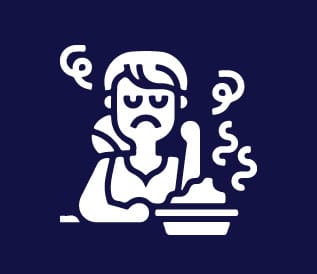
Orthorexia
Orthorexia is a term used to describe people who restrict their diet as part of a fixation on healthy eating. Although healthy eating is important, someone with orthorexia plans and limits their diet to the extent that it consumes their thoughts, interrupts their daily life, and negatively impacts their physical health.
People with orthorexia often start with good intentions, but it’s important to be aware that any type of restriction can eventually lead to a more serious eating disorder. This type of eating disorder is also often accompanied by excessive exercising.
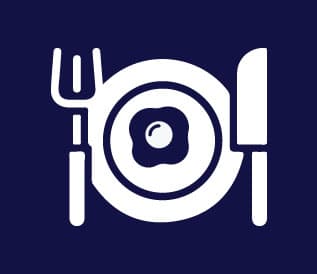
Diabulimia
Diabulimia is a term used to describe people with Type I diabetes who restrict insulin with the goal of losing weight. Diabetes is considered to be a high-risk factor for developing an eating disorder due to the necessary control and focus on foods, labels, and numbers.
Depending on what other types of behaviors are associated with insulin restriction, someone with diabulimia may also be diagnosed with a purging disorder, bulimia nervosa, or anorexia nervosa.
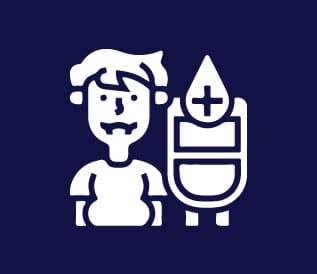
Other Specified Feeding and Eating Disorder (OSFED)
Other specified feeding and eating disorder (OSFED) is an overarching term used to describe eating disorders that don’t fall into the particular outlined categories above. OSFED can include diagnoses like atypical anorexia nervosa or BED/bulimia nervosa of low frequency or limited duration.
Historically, OSFEDs were considered less serious eating disorders. However, research today shows that children with these types of disorders are just as likely to experience serious and dangerous thoughts, behaviors, and medical complications as those with diagnosed anorexia or bulimia.
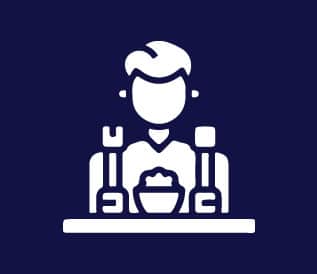
Unspecified Feeding or Eating Disorder (UFED)
Unspecified feeding or eating disorder (UFED) is a term used to diagnose people who exhibit the symptoms of a diagnosable eating disorder but don’t meet the full criteria.
Even though they don’t meet the full criteria, which could be because a medical professional doesn’t have the necessary information to diagnose them, a person with UFED still exhibits symptoms that cause them significant distress and impairment in their daily lives.
Any kind of eating disorder, no matter the type or severity, is harmful to your child’s health and well-being.
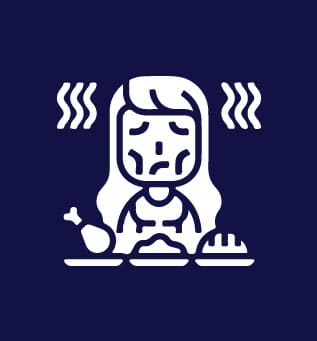
Causes of Eating Disorders in Children and Teens
Eating disorders can be caused by a range of biological, psychological, and societal factors. Understanding how different risk factors interact with one another and lead to or encourage an eating disorder can help you better protect your child.
Genetics can play a large part in whether someone is at a higher risk for an eating disorder. Children with close relatives who suffer from an eating disorder or a mental health condition such as anxiety, addiction, and depression are more likely to develop an eating disorder.
Certain mental states and disorders can also contribute to the development of an eating disorder. About 25% of women who have Type 1 diabetes develop an eating disorder at some point in their lives, most commonly in the form of diabulimia.
Children who exhibit signs of perfectionism or behavioral inflexibility often develop eating disorders. When combined with poor body image, these factors can feed off each other and develop into an eating disorder.
Many children who already have a history of other anxiety disorders, like generalized anxiety or obsessive-compulsive disorder, are also more prone to developing eating disorders.
For those predisposed to certain risk factors, simply existing in a society obsessed with thinness and the “ideal body” can quickly push them toward developing an eating disorder.
Bullying and teasing are unfortunately common within groups of young kids, but when those comments are centered around someone’s appearance and weight-shaming, they can make thinness feel like a necessary part of successful socialization.
In this age of social media, where apps have become the main place for young children to socialize, exchange ideas, and express themselves, it’s more important than ever to understand how social media can contribute to eating disorders.
According to documents leaked by whistleblower Frances Haugen to The Wall Street Journal, 17% of teen girls say using Instagram exacerbated their eating disorders. And in March 2020, Facebook researchers told executives that “32% of teen girls said that when they felt bad about their bodies, Instagram made them feel worse.”
Apps such as Snapchat, Instagram, and TikTok combine self-image with filters, photoshop, and quantifiable approval from others through likes and comments.
Once your child has become exposed to content about eating disorders, many algorithms will promote this type of content. This can lead to your child becoming inundated with messaging that normalizes and encourages eating disorders.
Dangers of Eating Disorders in Adolescents
Having any type of eating disorder can lead to a range of both short- and long-term negative consequences. Unlike some medical conditions that can be easily cured with a pill or treatment plan, recovering from an eating disorder is a long process that can take years.
Every organ in the body requires nutrients to function properly, so every part of the body can be affected by an eating disorder. Some common physical complications of an eating disorder include the following:
- Heart failure (due to muscle loss, decreased heart rate, or electrolyte imbalances)
- Lower metabolic rate
- Gastroparesis
- Constipation
- Esophageal rupture
- Pancreatitis
- Kidney failure
- Anemia
Eating disorders sometimes cause hormonal imbalances, which can pause menstruation or lead to insulin resistance or osteopenia (low bone mass or density). In addition to wreaking havoc on a person’s body, an eating disorder can cause neurological issues that lead to fainting, dizziness, sleep apnea, numbness and tingling, and difficulty concentrating.
In extreme cases, eating disorders can result in death. Although the exact mortality rate is difficult to determine, it’s commonly accepted that anorexia nervosa is a deadly disorder.
One study found that people with anorexia nervosa were six times more likely to die than average, whether from health complications, starvation, substance abuse, or suicide. Other studies report mortality rates of 4% for anorexia nervosa, 3.9% for bulimia nervosa, and 5.2% for OSFED.
No matter what the exact statistics are today, it’s clear that an eating disorder is dangerous, and in some cases potentially fatal, to your child.
Talking to Your Child or Teen About Eating Disorders
Providing your children with the knowledge and understanding of what an eating disorder is and how it can develop is the best way to protect them from developing one. Particularly since so much misinformation is available online, you must make sure your children get accurate information in a form that they understand.
There’s no perfect textbook or set of rules when it comes to talking with your children about difficult subjects. Being open and honest will help keep any conversation productive and your line of communication open.

Here are some points you might want to emphasize during your conversation:
- Eating disorders change your relationship with food
- People do not choose to have eating disorders
- Some people need extra help to recover from eating disorders
If you feel worried about your diet or your body, you can always talk to me - Emphasize body positivity and the importance of being healthy rather than being a certain weight
It’s also important that you not intervene in your child’s eating choices with negative comments. They need to know that you are not judging them and that you are there to support them. It can be helpful to lead by example by living a healthy lifestyle yourself; cook healthy and balanced family meals, and plan things to do with the family that are fun and active.
If your child has access to social media, it can also be helpful to show them how filters can manipulate photos and videos. This can help them understand how social media is curated to present a version of life that’s often different from reality.
Finding a balance between monitoring your child’s social media use and giving them the freedom to explore and express themselves will help you maintain a healthy relationship while keeping them safe from potentially damaging messages.
Helping Your Child with an Eating Disorder
If you believe your child has an eating disorder, understand that they may feel ashamed and want to keep it secret from you. Giving up an eating disorder, or even admitting to it for the first time, can be frightening. It may be particularly difficult for your child to take the first step toward recovery on their own.
To help encourage your child to seek treatment, remember their health is your number one priority. It’s better not to add to their emotional weight with your distress or to force them to open up to you if they’re not ready. Simply express your concerns, be ready to listen, and remind them you can handle this one step at a time, together.
Once you’ve decided to seek treatment, a patient assessment and medical exam will help you learn more about your child’s particular eating disorder, what has caused it, and what kind of treatment may be right for them.
If at any point your child expresses that their social media use was a contributing factor, our team at Social Media Victims offers free consultations to help you better understand the role social media has played in your child’s eating disorder.

